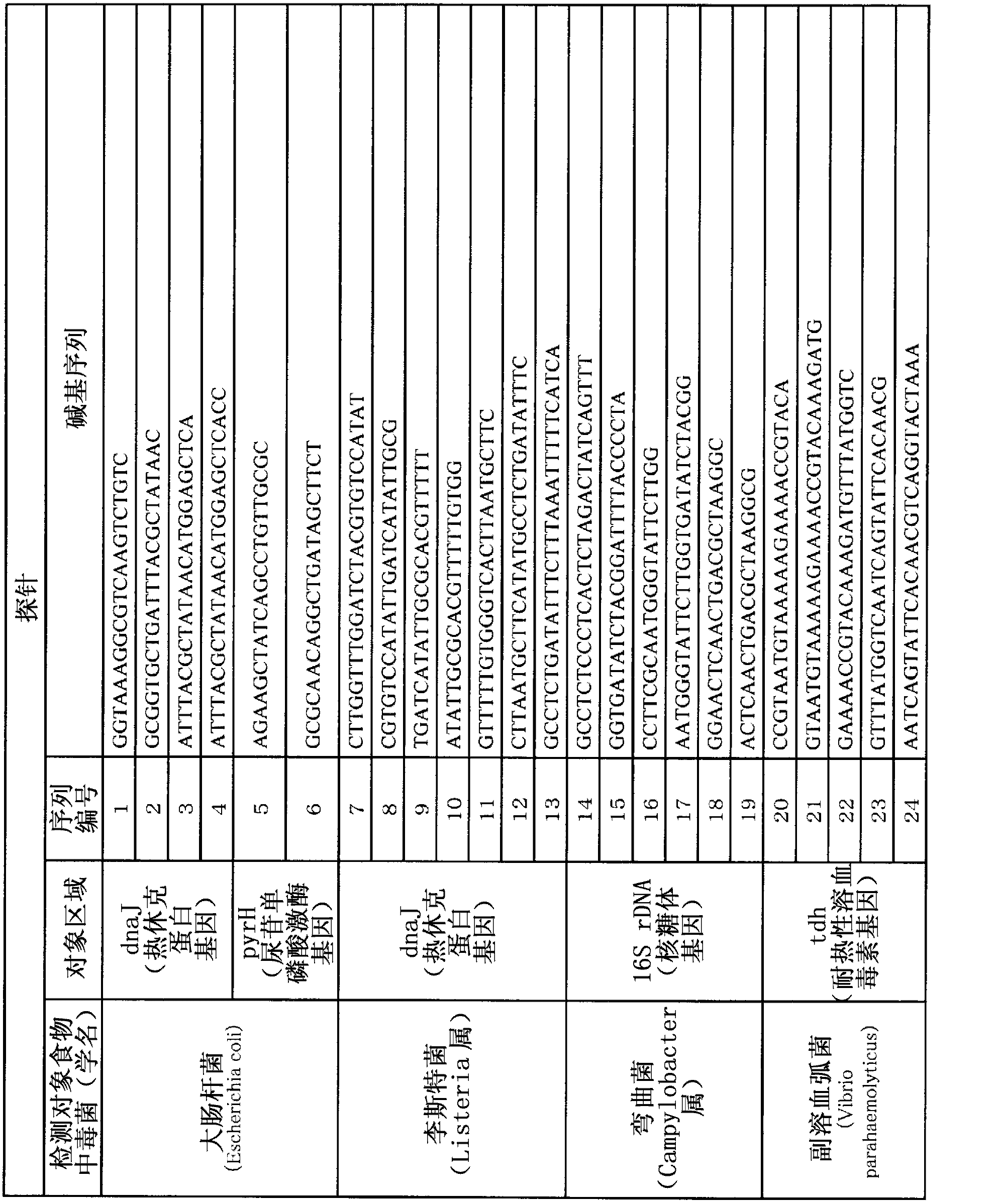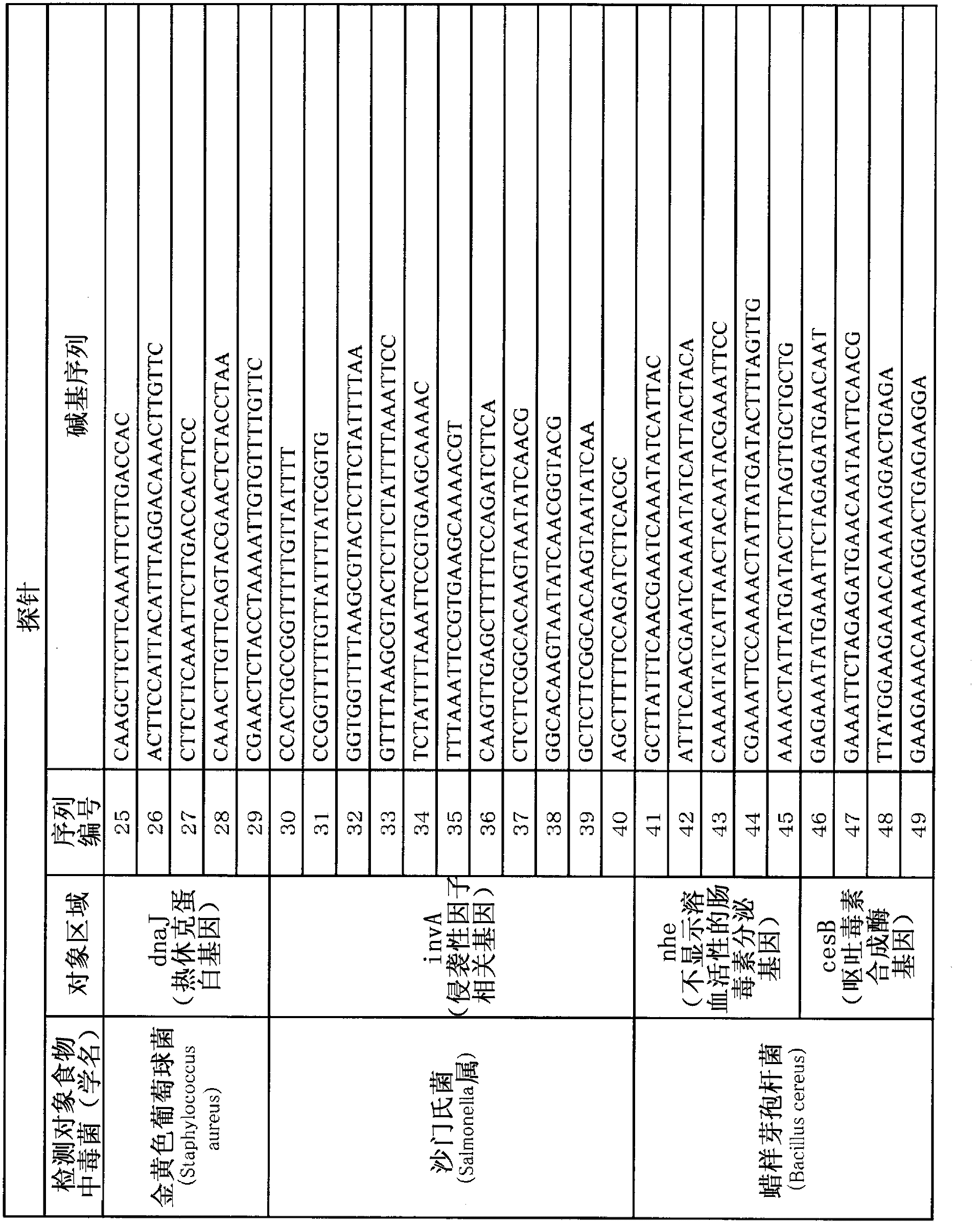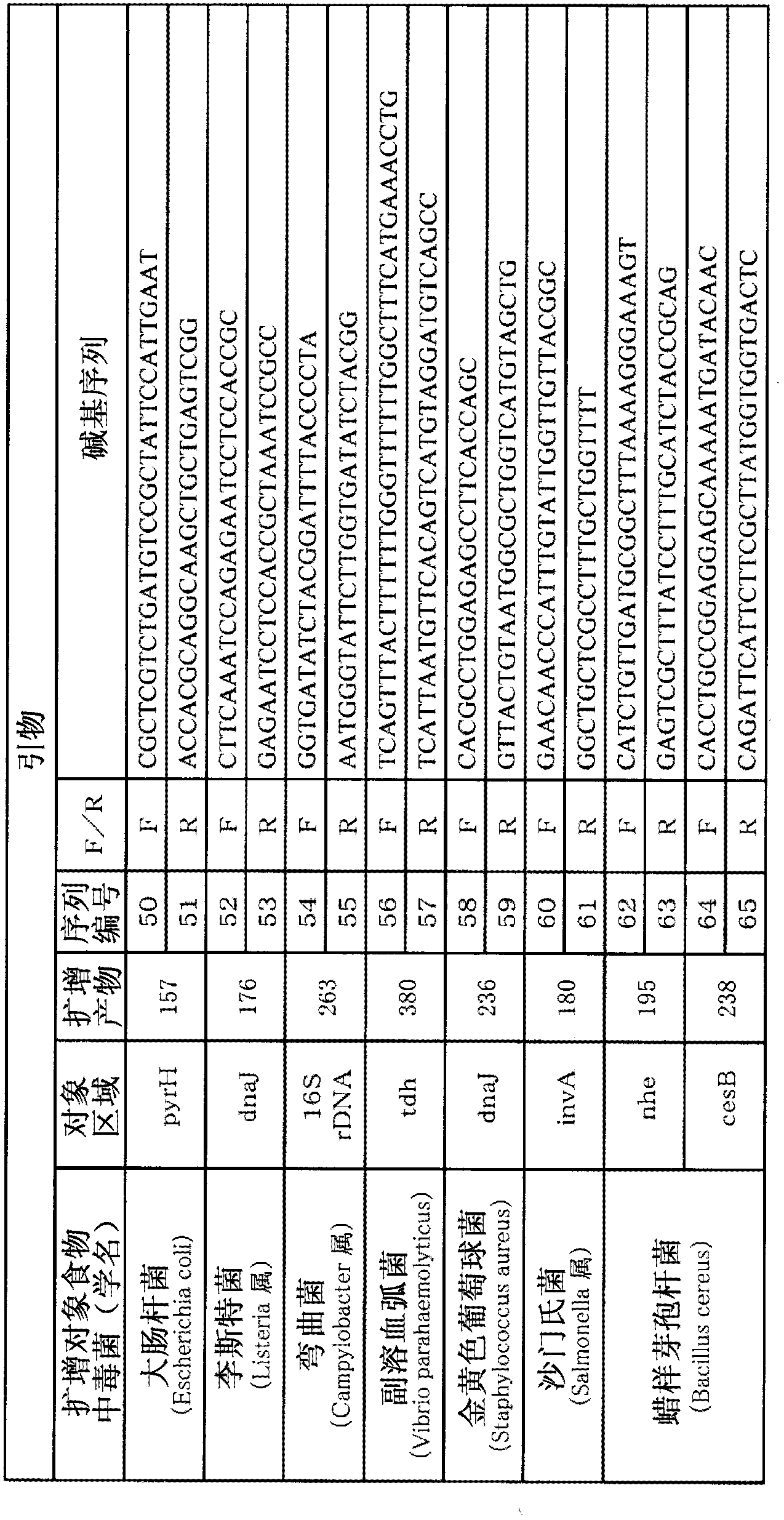Food-poisoning bacteria detection carrier, and method for detecting food-poisoning bacteria
一种食物中毒菌、检测方法的技术,应用在的载体领域,能够解决难以识别菌株、测序无迅速性、鉴定困难等问题
- Summary
- Abstract
- Description
- Claims
- Application Information
AI Technical Summary
Problems solved by technology
Method used
Image
Examples
Embodiment 1
[0184] Next, using these PCR amplification products, an experiment for confirming whether detection target food poisoning bacteria can be detected by the probe immobilized on the carrier for food poisoning bacteria detection of this embodiment was performed.
[0185] Such as Figure 5 As shown, the carrier for detecting food-poisoning bacteria of this embodiment uses a carrier immobilized with a probe. That is, probes for detecting heat shock protein genes of Escherichia coli of SEQ ID NOS: 1 to 4 were immobilized at positions 1 to 4. At the positions 5 and 6, probes for detecting the uridine monophosphate kinase gene of Escherichia coli of SEQ ID NO: 5 and 6 were immobilized. At positions 7 to 13, probes for detecting heat shock protein genes of Listeria of SEQ ID NOS: 7 to 13 were immobilized. At positions 14 to 19, probes for detecting ribosomal genes of Campylobacter sequence numbers 14 to 19 were immobilized. At positions 20 to 24, probes for detecting the heat-resista...
Embodiment 2
[0221] Next, a test was conducted to verify that the carrier for detecting food-poisoning bacteria according to the present embodiment can simultaneously detect seven kinds of food-poisoning bacteria to be detected.
[0222] As the PCR reaction solution, materials having the following composition were used. Primers synthesized by Life Technologies Japan Co., Ltd. were used. In addition, materials made by Takara Bio Co., Ltd. were used.
[0223] Buffer 10×Ex Taq buffer (20mM Mg 2+plus) 2.0μl
[0224] Nucleic acid synthesis substrate dNTP Mixture (dATP, dCTP, dGTP, dTTP each 2.5mM) 1.6μl
[0225] Primer F (10ng / μl, final conc. 2ng) 0.2μl×7
[0226] ・Primer R (10ng / μl, final concentration (final conc.) 2ng) 0.2μl×7
[0227] ・Primer F for detection of Vibrio 0.4μl
[0228] ・Primer R for detection of Vibrio 0.4μl
[0229] · Nucleic acid synthetase EX Taq (5U / μl) 0.1μl
[0230] ・Labeling component Cy5 0.2μl
[0231] ・Sample DNA 1.0μl×7
[0232] ·Sterilized water 5.5μl
[0...
Embodiment 3
[0268] Next, an experiment was performed to confirm that the probe immobilized on the carrier for detecting food-poisoning bacteria according to the present embodiment does not generate a false positive reaction.
[0269] In this example, a material containing genomic DNA of six kinds of food poisoning bacteria was prepared except that genomic DNA of one kind of food poisoning bacteria was removed from the PCR reaction liquid of Example 2. conduct experiment.
[0270] Then, it was confirmed whether or not fluorescence was detected at the site to which the probe for food poisoning bacteria whose genomic DNA was not contained in the PCR reaction liquid was immobilized. The results of the fluorescence photographs are shown in Figure 13 and Figure 14 , the fluorescence intensity values are shown in Figure 15 and Figure 16 .
[0271] exist Figure 13 and Figure 14 , each column 1 to 7 represents the number of each experiment performed, and the food-poisoning bacteria ...
PUM
 Login to View More
Login to View More Abstract
Description
Claims
Application Information
 Login to View More
Login to View More - R&D
- Intellectual Property
- Life Sciences
- Materials
- Tech Scout
- Unparalleled Data Quality
- Higher Quality Content
- 60% Fewer Hallucinations
Browse by: Latest US Patents, China's latest patents, Technical Efficacy Thesaurus, Application Domain, Technology Topic, Popular Technical Reports.
© 2025 PatSnap. All rights reserved.Legal|Privacy policy|Modern Slavery Act Transparency Statement|Sitemap|About US| Contact US: help@patsnap.com



